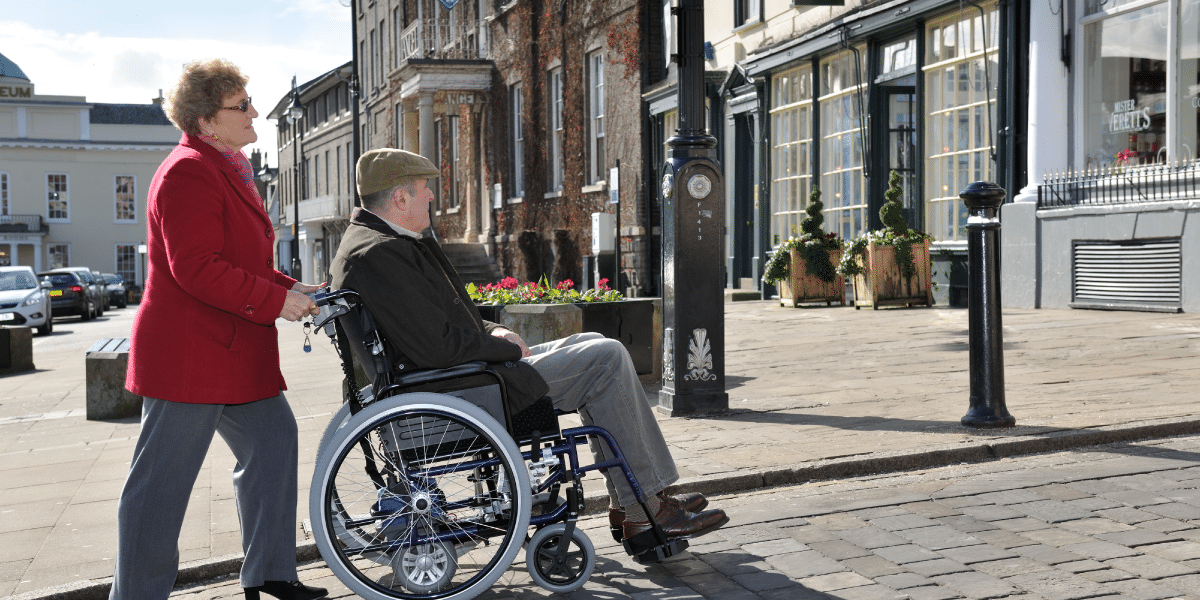
Maintaining good posture in the wheelchair helps us to carry out tasks and perform activities more effectively. Correct posture differs according to each person and their circumstances, but it is always key to maintaining health and to get the best out of the wheelchair.
This blog contains basic tips to enable good posture if the user of the wheelchair needs specialist advice for the disability we would always recommend speaking to an occupational therapist for advice.
The importance of posture in the wheelchair
Achieving good posture provides comfort to wheelchair users by helping relieve pressure on different areas of the body such as the spine, neck, thighs and buttocks, as well as helping to optimise the effort required to operate the wheelchair whilst using less energy.
Good posture is also crucial for correctly propelling the wheelchair to reduce the risk of repetitive strain injuries in the shoulder tendons. The aim is to correctly reach the pushrims and to push with a full movement of the arm, starting at the rear and following right the way around. If the user slides in the seat, the pushrims will be too high to propel from behind, making the movement uncomfortable to perform, as well as shorter and less efficient as a result.
Basic points to keep in mind
When it comes to studying wheelchair functionality, biomechanical factors should be taken into account, such as the height, position and size of the wheels, as well as the distance between and the angle of their axes. It is also important to take into account the:
Seat height
Footrest
Backrest height
Armrest
All of these features can be adjusted and configured to suit a specific person’s requirements and to ensure that the correct positioning and posture is achieved.
1. Seat
This is the part of the chair that is in permanent contact with the user and therefore is essential for achieving the necessary stability for optimal propulsion and function. It also serves to evenly distribute weight and avoid pressure sores.
Ideally, the weight should be distributed over the largest area possible. As such, the seat should neither be too wide (causing the user to user to adopt non-symmetrical postures) or too narrow (causing the user discomfort and pressure sores). The wheelchair’s seat must likewise not be too short (forcing pressure onto the buttocks) or too long (where the user has to slide forward to avoid the excessive tension in the area behind the knee).
According to experts, the optimal seat length is when the user can fit two fingers into the area between the seat and the back of the knee (popliteal fossa) when sitting upright. The seat itself should have a base that is firm enough that the user does not sink. In most cases, it is advisable to place an anatomical cushion at the lower rear of the seat to provide a comfortable fit that spreads the pressure evenly.
2. Footrest
The foot support or footrest must be at an angle comfortable for both ankles and knees. Ergonomically speaking, this would ideally be around 90 degrees. However, in practice, this may depend on many factors, as this could impede the free rotation of the front wheels or actions such as climbing a curb, so it may be slightly lower for very active users or sports wheelchairs. It could also be the case that the user is unable to keep his knees at a 90-degree angle. Likewise, the height of the footrest will also play a part as if it is too low, this may alter the position of the hips, whilst if it is too high, it will create too much pressure on the buttocks.
3. Backrest height
The importance of the backrest lies in its ability to stabilise the upper body. It depends on the disability and/or injury of each user and is fundamental to the comfort and function of the upper extremities.
4. Armrest
Despite its name, its purpose is to also allow the neck muscles to rest, as well as the arms. It is advisable that the elbows be supported at 90 degrees, as having them higher may cause stress upon the neck and shoulders, whilst having them any lower will cause the user to fall to one side. Depending on the user and their lifestyle, the armrests can be replaced by side guards, which do not provide support but do help shield from dirt and splashing when propelling the wheelchair.

Taking measurements to configure, design and buy a wheelchair
The wheelchair is an extension of the user, so taking correct measurements is crucial to determining the degree of independence a person may enjoy. This is why an orthopaedic technician must evaluate the specific requirements of each individual case, though it is worth being aware of some of the basic aspects.
Measurements should be taken on a hard surface with a maximum cushioning of 2-3 centimetres. The user should try to adopt the same posture that they will use when seated in the wheelchair. The pelvis, knees, ankles and elbows should all be straight, ideally at an angle at or close to 90 degrees. It is important to take other factors into account such as the clothes that the user regularly wears to help determine the width of the seat.
Thigh measurements should be taken from both the left and right sides to avoid discrepancies. The same should be applied to the calves. Obtaining accurate measurements is key when it comes to ensuring comfort and getting the best out of the wheelchair.
At Derbyshire Mobility we know the importance of using a professional to undertake accurate measurements. As such, it is essential to arrange a visit to our store so that a qualified technician can perform a physical examination and assessment to help put together the perfect wheelchair for you.